1520. Steam locomotive as a war machine - stupidity
A small digression.
Here, in the comments to the material on the logistics of the "capture" of Ukraine, several remarks were made, to which it makes sense to answer.
Firstly, no one refuses from the cycle on the state of the Russian railways. An epidemic, which does not exist, simply prevented, as a result of which the bulk of the informant consultants ended up who were on sick leave and who were in the hospital. Agree, it's not very nice to go in with questions in such conditions. We started to bounce back little by little - we started working. So - everything will be. Scandals, intrigues, investigations - all in their own time.
Secondly. I have long been accustomed to the fact that we have many readers who come solely to show that they are at least as stupid as the authors. Dear, let’s still do without outright jokes such as the firebox of locomotives with a vobla, zhezlovka, or (especially outraged the co-authors) dragging trains around the hauls with a shunting diesel locomotive of the ChME3 type. We still have a serious site, and not somewhere else. We know how to look not only in tomorrow, right?
So, today we have a steam locomotive under consideration. The one that, in case of emergencies, we charge with firewood or fish (as our readers suggest) and take something and somewhere on it.
Actually - no, we will not get lucky.
So from the doorway, but with an explanation of the reasons.
Of course, the fact that steam locomotives are kept in Ermolino, Roslavl, Irael and other places in case of emergency is not bad. And when this unforeseen event occurs, they can be useful in some way, that's only very, very limited.
Proof? Excuse me.
1. Technical condition
The Internet is full of photos from storage bases, from which it can be seen that the equipment is stored simply outdoors, under the influence of the atmosphere. Considering that the last steam locomotives in the USSR were manufactured in the mid-50s of the last century, it can be concluded that the state of technology, which has been standing in the open for more than half a century, is not the most brilliant.
Metal fatigue is not a fairy tale. Especially when it comes to the load-bearing structure. Still, a steam locomotive is not a garden cart.
Tubes, cylinders, boilers, superheaters - all this, 70 years after release, ceases to be reliable. Naturally, there is nothing to change, because even if you use some of the locomotives from storage as donors, it will still be a "trishkin caftan", since one rubbish will change for another.
I watched our steam locomotive, which drags one car of the "historical" train along the route, 30 km long. He manages to pass it, but water really pours from all the cracks.
No spare parts, no repairmen. Usually, the repair and maintenance of steam locomotives that drag retro trains are carried out by their crews. With the help, you know, of enthusiasm, a hammer, a crowbar, ingenuity and a locomotive grandmother.
Meanwhile, the pressure in the boiler of the steam locomotive is from 12 to 14 atmospheres. Not very pleasant numbers in conditions of worn or corrosive metal from time to time, is not it?
There is a positive moment: they began to train again to control the locomotive. This happens literally in two or three institutions of Russian Railways, but they teach.
So the technical condition and serviceability of steam locomotives is 2 points out of 10.
2. Infrastructure
Everything is much sadder here. In order for steam locomotives to start moving along the railways of Russia, it is necessary to create coal reserves at almost every station. As it was a hundred years ago.
That is, the work itself is more than colossal. It should be a separate track at the station, equipped with a coal storage facility and a mechanized coal tender.
Let's just say that now front loaders or excavators will solve this issue easily and naturally. But equipping a warehouse, bringing coal into it, and even arranging replenishment of stocks is not an easy task.
And you will need a lot of coal. For example, a steam locomotive of the E series took up to 18 tons.
Next we have water. With this, too, not everything is smooth. We need a lot of water. The same steam locomotive of the E series took up to 27 cubic meters of water.

Previously, special water-filled rotary columns were installed to supply steam locomotives with water. A very simple and competent design, which made it possible to fill the required amount of water into the locomotive in a short period of time.
Now there are practically no such columns left; trains are filled with water through hoses. With a steam locomotive, this number will not work, since it is not necessary to charge a tank for several hundred liters (this is in the life support systems of road trains, for example), but for several cubic meters.
For comparison, one steam locomotive of the E series is three sprinklers based on KamAZ. The average volume of a sprinkler is from 6 to 10 cubic meters, depending on the installed capacity.
How long does it take to fill a steam locomotive's tank from such tanks through conventional hydrants? And how convenient will it be? Holding a sleeve through which water flows under tremendous pressure, being on some kind of overpass above a steam locomotive blazing with heat, is so-so pleasure.
In an amicable way, of course, the water filling system must be restored, and without inventing anything new. Just a pipe with a wide diameter, through which a lot of water can be supplied.
In general, only the creation of this structure will require huge funds and time. The "shoulder" of the steam locomotive is not the same as that of more modern colleagues, therefore it will be necessary to organize the infrastructure to ensure the operation of the steam locomotives at a more or less decent station.
Plus, repair teams and a stock of spare parts in case of breakdown, at least at large stations.
In general, here in terms of the possibility of creating infrastructure for the use of steam locomotives on a national scale - 1 point out of 10.
3. Security
An important component. On modern technology, there are systems that ensure safety. CLUB, SAUT, TSKBM, ALSN, which really do a lot for the safe operation of the locomotive and its crew. They control, notify, signal and even slow down the train.
Naturally, there is none of this on the steam locomotive. The driver and the assistant driver scampered along the tracks, focusing exclusively on traffic lights and semaphores. The modern driver is simply not able to drive like this, he just got used to relying on all these systems.
Of course, it is possible to integrate all (or part) of the security systems into the steam locomotive. But this is time and money again. And the question of how much we will leave unanswered, since there are simply no specialists among us who are able to answer this question, unfortunately. Obviously, there is a lot of both the first and the second.
As a result, safety issues are 7 out of 10, since it is not clear which is simpler and more profitable: equip steam locomotives with safety systems or teach drivers how to drive at traffic lights and look at the situation.
Personally, I think it's easier to stuff a locomotive with electronics, although it looks stupid.
4. Efficiency
After evaluating the previous factors, let's look at the overall efficiency of the steam locomotive as a means of transportation.
Let's take the same steam locomotive of the E series and contrast it with the 2TE116 freight locomotive. A working machine, simple and trouble-free, like ... like a steam locomotive, still working all over Russia.
A diesel locomotive does not have the same problems as a steam locomotive. With spare parts, for sure, the machine is still being produced (albeit in Ukraine), and we have something to repair in Kolomna. That is, in terms of technical condition, despite the fact that “phantomas” are not newcomers to the roads - they are solid 7 out of 10.
As for the infrastructure, the locomotive is also doing well here. There are experts, there is where and what to refuel. Well, diesel is a more common thing in our time than a boiler with a superheater. Total - 9 out of 10.
As far as security systems are concerned, everything is clear. 10 of 10.
And we just have to compare the real efficiency of these machines.
The power of the E series locomotive is 1300 h.p.
Diesel locomotive 2TE116 has two diesel engines with a capacity of 3 hp. EACH.
Accordingly, the traction force of the steam locomotive is 18 100 - 19 500 kgf.
The traction force of the locomotive is 25 kgf.
Locomotive traction is this parameter, which determines the mass of the train, depending on the relief of the route. Its greatest value is required when starting a train from a standstill, accelerating, and also when following an ascent.
Here the diesel locomotive has an advantage. Yes, there were more powerful (I took the E series as the most massive and most common steam locomotive today) steam locomotives that were not inferior to diesel locomotives, but it makes sense to bring them if they were made from 50 to 200 pieces and, possibly, to this day, alive and not left at all?
The locomotive can carry more cargo by weight. This is important, since the same Tanks have grown quite fat over the past 80 years. If the T-34 weighed in the region of 30 tons, then the T-72 is 10-12 tons more.
Everything is clear here, a diesel locomotive that can be refueled without noise and dust (in the literal sense of the word), simply by fitting a tank with fuel anywhere, can be repaired without any problems, which, moreover, can carry more cargo over a greater distance, is more profitable than a locomotive for which there is nothing.
To some, this will seem sad, but a steam locomotive, which is rather complicated (yes, it is very difficult) in operation, is not suitable for the role of the main draft means in emergency situations. At the end I will give a link of what a steam locomotive driver should know, a guide in pictures. Very informative, by the way.
Yes, the locomotive looks like a masterpiece on the move. This year I myself appreciated that when it goes at a speed of 40-50 km / h, smoke, steam, the roar of a whistle before moving, strikingly different from the whistles of electric locomotives - yes, it looks powerful and beautiful.
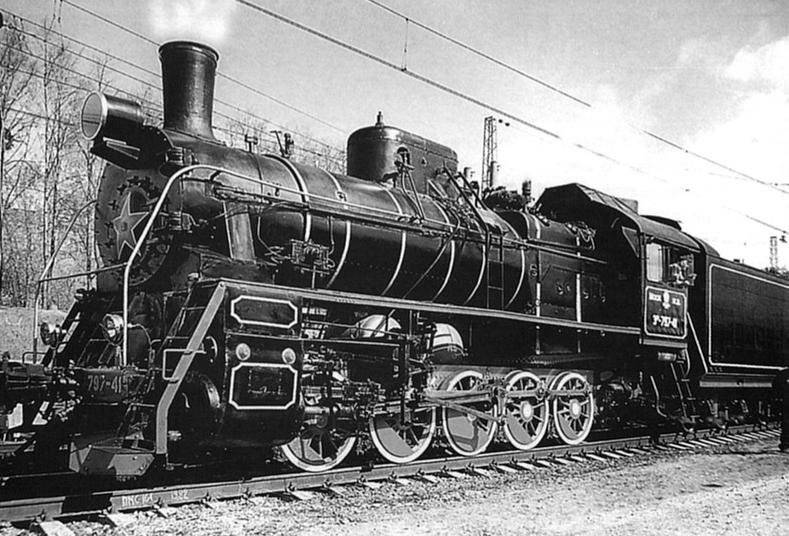
But we are talking about the fact that we will have to carry a lot and quickly. In the case of military operations, you should not count on a steam locomotive. Too old, too worn out, no base. The role of the main supplier in the event of a power failure (or lack of such, such as, for example, the YUVDZh branch to Kharkov) will fall on the locomotive.
And steam locomotives can be used in areas where there is coal. The same Rostov region. Locally. To free up freight diesel locomotives.
But in reality, the age of steam locomotives ended at the moment when the infrastructure for servicing steam locomotives disappeared from the stations. And today these beautiful cars are suitable exclusively for the entertainment of all comers as part of retro trains, nothing more.
And the role of the main supplier of equipment, ammunition and everything else to the places where it burns, and even in conditions of possible problems with the contact network or its complete absence (hello, Crimea, if anything) is better to entrust the diesel locomotive.
Yes, he is not so brutal and handsome, but in a difficult environment he will not let you down. Of course, if this is not ChME3, with which we decide to drag the train with the tanks.
For those who are interested: Illustrated guide to the locomotive driver.
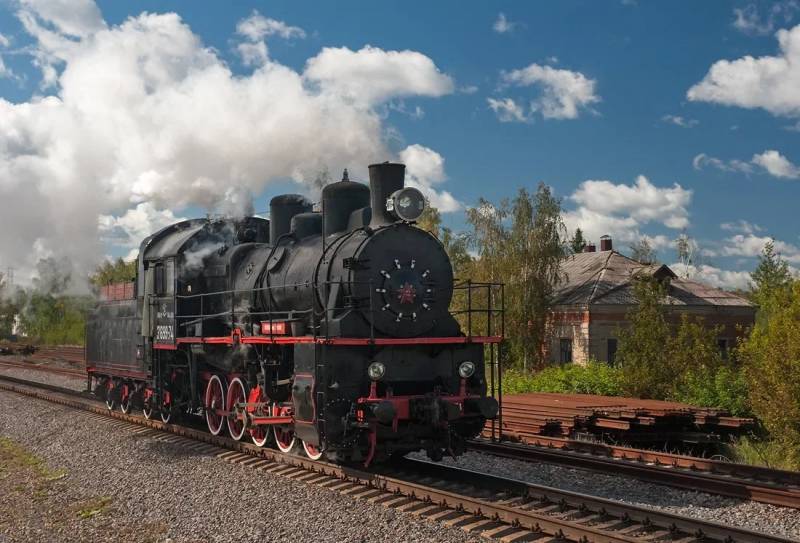




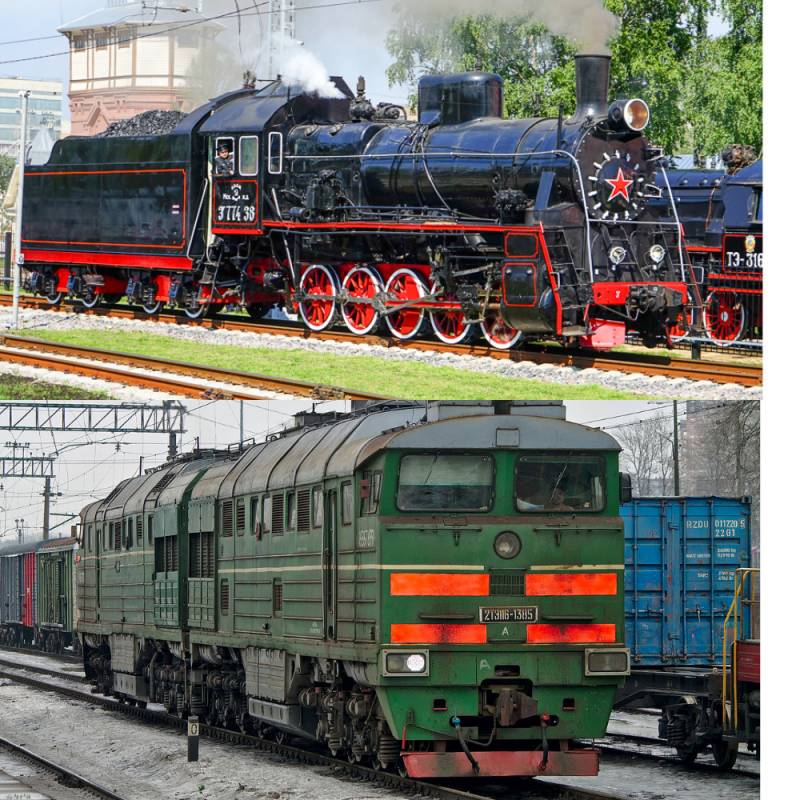
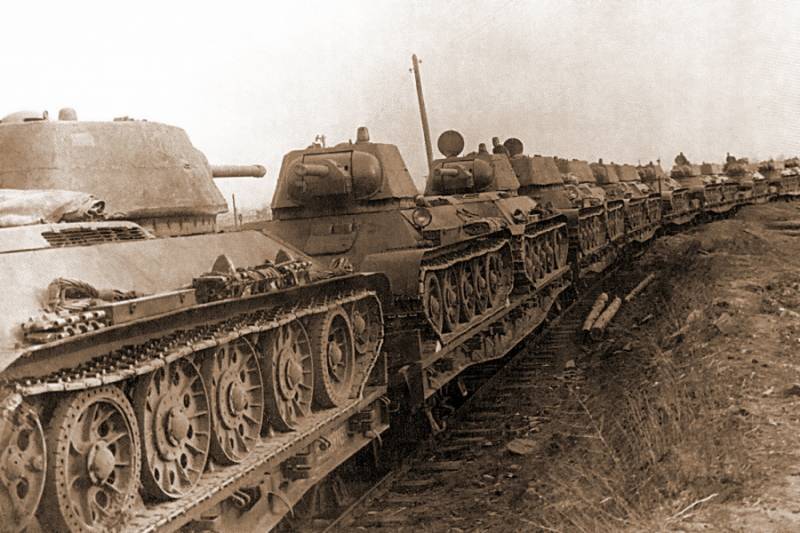
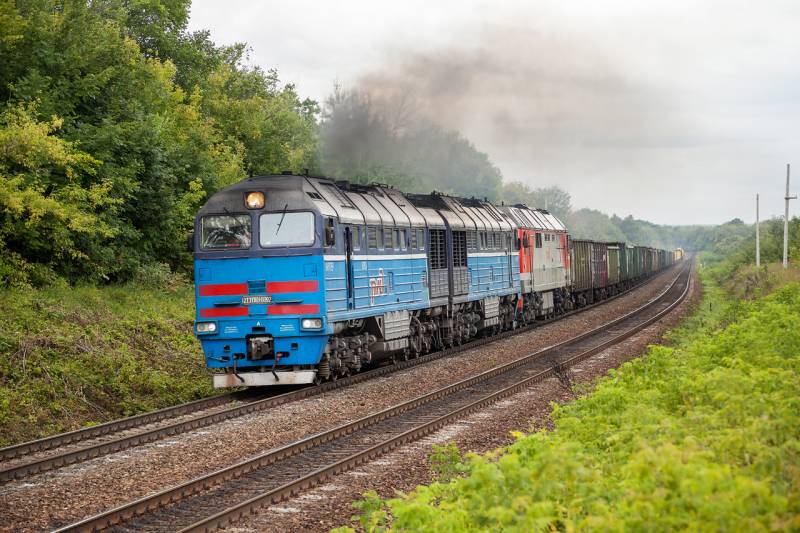
Information